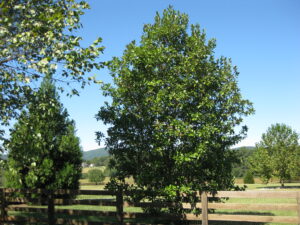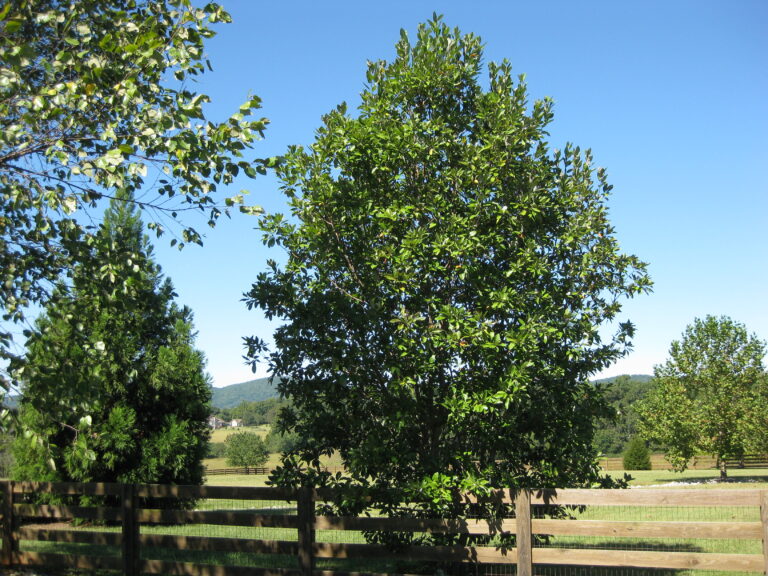Beautyberry (Callicarpa americana) is a deciduous shrub found naturally in the southeastern United States. It grows between 3 and 6 feet tall and about 4 feet wide, though it’s been known to reach 9 feet tall. It has a moderate to fast growth rate, gaining around 1 to 2 feet per year until it is mature. Beautyberry does not attract pests or diseases.
The beautyberry’s has a medium light green foliage. The Beautyberry’s flower is pink or light purple and are fairly insignificant, this plant is known for one remarkable feature: its bright purple berries that grow around the plant’s stems in plump clusters. Some varieties have white berries. The berries appear in the late summer or early fall and can persist into winter, providing visual interest for the landscape and food for wildlife. The berries are edible for both people and animals, and some people even use them to make jelly and other foods. In the fall, beautyberry foliage turns yellow, though frost can cause the leaf color to pass directly from green to brown before the leaves drop for winter.
Beautyberry shrubs generally do fine either in full sun or partial shade. They naturally grow on the edges of wooded areas where the amount of sunlight they get can vary. More sunlight will result in higher berry production. However, more sunlight will also increase the shrub’s need for water.
The Beautyberry prefers moist clay or friable soil that’s rich in organic matter (pH 5.0 to 7.0). This mimics the forest floor where they naturally grow. Beautyberry’s will show stress by drooping their leaves in dry conditions.
Beautyberry shrubs thrive throughout their hardiness zones (6 – 11) and don’t have any particular temperature or humidity requirements. A layer of mulch around the base of the shrub can help to keep its roots at a consistent temperature, which will benefit the shrub’s overall health.
These shrubs generally do not need fertilizer unless you have very nutrient-poor soil. A shovelful or two of compost in the spring can benefit beautyberry’s growth. But too much fertilizer can result in decreased berry production.
Because beautyberry shrubs bloom on new wood, they are generally pruned as desired for shaping in the late winter before new growth begins. Beautyberry’s berries can last throughout the winter months, giving a bright pop of color to your winter garden but you should cut it back in late winter for better berry growth.
At the northern end of their growing zones, these shrubs are often pruned down to within 1 foot of the ground each year in the winter because the cold can make the old growth unattractive.
Beautyberry leaves can be used as an insect repellant. Crush beautyberry leaves in your hand and rub them on yourself. (Or make a beautyberry leaf salve/lotion.) The result: a natural, highly effective single-ingredient mosquito and tick repellent.
The Beautyberry berries are edible and can be used in a variety of was in the kitchen. There are recipes for hot or cold Beautyberry teas. The Beautyberry can be used to make jelly, jello and syrup.








